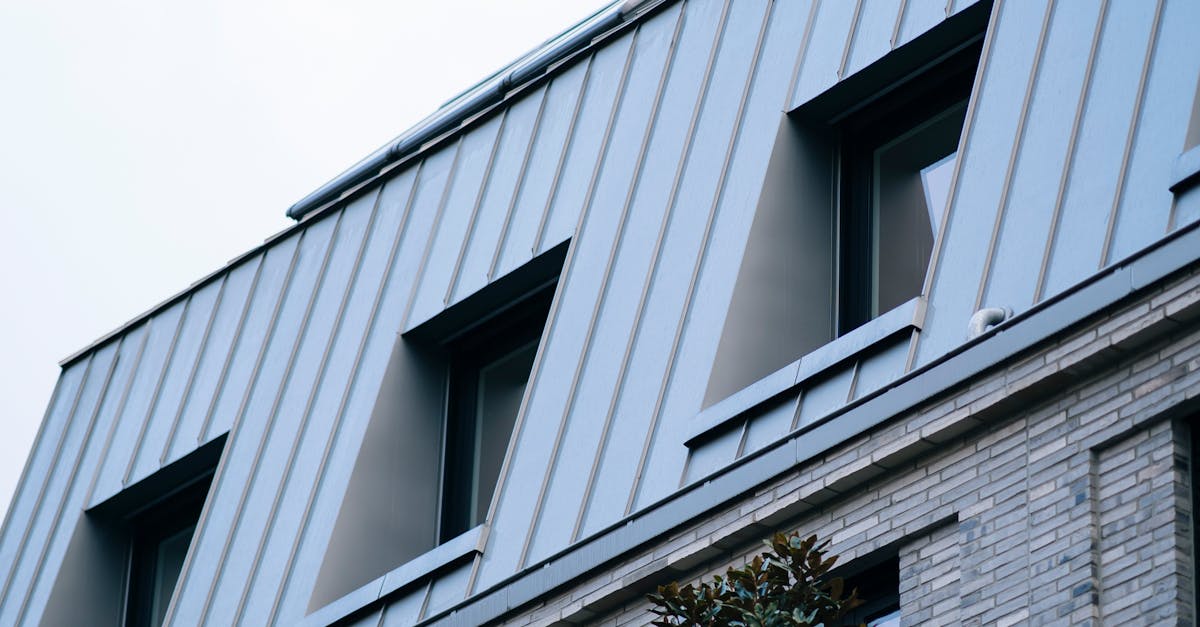What is a common problem with skylights?

UV Damage to Interiors
Skylights can significantly enhance the natural light in a space, but this exposure comes with the risk of UV damage to interiors. Ultraviolet rays can cause fading to furniture, artwork, and flooring over time. Exposure to prolonged sunlight can lead to a noticeable change in colors, with some materials losing their vibrancy or becoming discolored. This impact is particularly pronounced in spaces that receive direct sunlight for many hours each day, where the damage can accumulate quickly.
To mitigate the effects of UV damage, homeowners should consider protective measures. Window films and UV-blocking coatings can be applied to skylights, reducing the intensity of harmful rays. Additionally, using UV-filtering blinds or curtains can help regulate light exposure while maintaining privacy. Choosing furnishings made from UV-resistant materials can also prolong the life of interior elements. These strategies can provide a layer of protection against the detrimental effects of sunlight while still allowing the benefits of natural light into the home.
See here for more great tips.
Protecting Furnishings and Flooring
Significant sunlight exposure through skylights can lead to fading and deterioration of furnishings and flooring. Fabrics, wood, and other materials are particularly vulnerable to UV rays, which can cause colors to wash out over time. Homeowners often overlook this risk when installing skylights, but understanding the potential damage can help them take necessary precautions.
Several strategies can be employed to safeguard interior elements from UV damage. One effective approach is using UV-blocking window treatments, which can minimize light transmission while still providing natural illumination. Additionally, applying protective coatings on wood floors and placing rugs in sunlit areas can help preserve their appearance and prolong their lifespan.
Maintenance Challenges
Skylights require consistent maintenance to ensure their longevity and performance. Dust, debris, and leaves can accumulate around the frames, potentially blocking drainage channels and leading to water leaks. Regular cleaning of both the glass and the surrounding areas prevents buildup that could compromise the skylight's functionality. In addition, the seals and flashing should be inspected periodically to check for wear and tear. Addressing these areas promptly can help mitigate issues before they escalate.
Another challenge comes from the materials used in the skylight's construction. Over time, UV rays can cause deterioration of certain components, particularly seals and gaskets. If these parts fail, it can lead to air leaks or water ingress, resulting in costly repairs. Homeowners should be proactive about scheduling inspections and making necessary repairs to maintain their skylights effectively. Staying on top of these tasks can help ensure that skylights continue to enhance natural light without compromising the integrity of the home.
Routine Care and Inspections
Regular inspections of skylights are essential for maintaining their functionality and preventing potential issues. Homeowners should conduct visual examinations to check for leaks, cracks, or signs of wear. Flashing around the skylight should also be scrutinized, as improper sealing can lead to water intrusion. These inspections should occur at least twice a year, particularly before winter and after heavy storms, to ensure that any problems are identified early.
Cleaning the skylight is another critical aspect of routine care. Dust, debris, and even bird droppings can accumulate on the glass, obstructing natural light and diminishing the aesthetic appeal. A simple solution involves using a soft brush or cloth paired with a non-abrasive cleaner to keep the surface clear. Additionally, any overhanging branches or foliage should be trimmed back to prevent future buildup and potential damage to the skylight itself.
Noise from Rain and Wind
Skylights can amplify the sounds of rain and wind, creating a distraction within a home. While natural light enhances ambiance, the accompanying noise may disturb activities such as conversations, reading, or watching television. Many homeowners find that heavy rain can produce a drumming sound, which may become bothersome, especially during storms.
To mitigate the impact of noise, some homeowners explore soundproofing options. This can include using specialized acoustic materials that absorb sound or installing additional insulation around the skylight area. Additionally, choosing double-glazed or laminated glass for skylights can help reduce external noise, providing a more peaceful indoor environment.
Soundproofing Considerations
Skylights can amplify outdoor noises, particularly during heavy rain or strong winds. The sound can detract from the comfort of a home environment, especially in spaces where quiet is desired, such as bedrooms or offices. Homeowners may find that the typical materials used in skylight construction do not provide sufficient sound insulation to minimize these disturbances.
To address noise issues effectively, various soundproofing solutions are available. Installing sound-dampening materials around the skylight can significantly reduce external noise transmission. Options such as acoustic glazing or adding secondary layers can enhance the overall soundproofing effect. These measures can help create a more tranquil living space while still enjoying the benefits of natural light.
FAQS
What are some common problems associated with skylights?
Common problems with skylights include UV damage to interiors, maintenance challenges, and noise from rain and wind.
How can UV damage from skylights affect my home?
UV damage can fade and damage furnishings, flooring, and artwork within your home, leading to costly replacements and repairs.
What routine maintenance is required for skylights?
Routine maintenance includes regular cleaning, checking for leaks, and inspecting seals and flashing to ensure optimal performance.
Can I reduce noise from rain and wind with skylights?
Yes, soundproofing considerations can help reduce noise, such as installing acoustic panels or selecting double-glazed skylights for better insulation.
Are there specific materials recommended for skylights to minimize UV damage?
Yes, skylights made with low-E (low emissivity) glass can effectively reduce UV exposure and help protect your interior spaces.
Related Links
What are the disadvantages of skylights?Do skylights increase insurance?